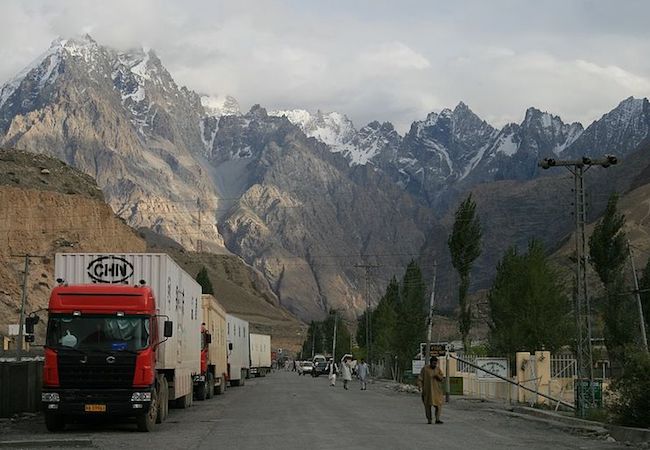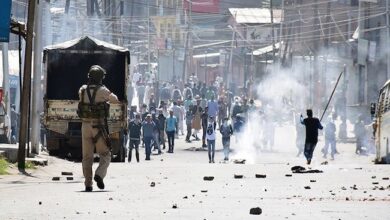South Asia: A front for global economic domination

By Samarth Kavoori
Whatever the opponents of the China-backed- Belt and Road Initiative (BRI) such as Australia, Japan and India may say, the initiative does seem like an attractive economic opportunity for developing economies. A study led by Deloitte and the Shanghai Municipal Commissioner of Commerce (SMCC) indicates that interest in the project has amplified expressively since its inception. South Asian countries aren’t an exception for recognizable reasons as they seek to bolster their own economies and infrastructure. With the exception of Bhutan and India, the remaining states are all involved in BRI projects. Pakistan is involved in the ‘Long Term Plan for China-Pakistan Economic Corridor’ that is expected to last till at least 2030. While Sri Lanka, Nepal and Bangladesh are likely to monitor the situation objectively.
Can India provide a substitute to BRI? No major initiative along the same lines has been launched in recent years. For example, the ‘Look East’ policy remains neglected, in-fact forgotten by most. Now, let us examine China and India’s relationships with each country individually. To begin with let us take India’s arch-nemesis Pakistan. According to American Enterprise Institute’s (AEI’s) China Global Investment Tracker, the Chinese investment in Pakistan amounts to USD 58.46 billion (since 2005) that includes USD 4.5 billion for FY 2018-19 alone. The investments in Bangladesh for the year 2018-19 are considerably higher at USD 11.96 billion, while the investment in Sri Lanka and Nepal amount to USD 1.12 billion and USD 3.15 billion respectively. Ironically India itself received ample Chinese assistance that year worth at USD 6.34 billion. In fact, South Asia alone receives about 11% of China’s FDI that is likely to surge in time. According to reports, India’s total overseas investment or Outward FDI amounts to USD 12 billion, less than China’s investment in South Asia alone. The figures are a sign of relief for the Chinese, who remain assured of grasping the South Asian markets from India’s hands. India in return has retorted to geopolitical strategies that are unlikely to benefit them in the long run as they may lose their dominance over the South Asian markets.
Likewise, institutions like SAARC or SAFTA that could hypothetically have helped India form a common market similar to the European common market are gradually coming to an end. On top of that, Gotabaya Rajapaksa’s thumping victory in the Sri Lankan elections isn’t good news for India. Rajapaksa’s notable inclination towards China remains a concern for India. Sri Lanka was also one of the first countries that witnessed the debt-trap strategy, when the island nation was unable to repay the Chinese loans for the Hambantota harbour and had to lease the port instead for 99 years. Moreover, Rajapaksa reportedly blamed India for interfering in the country’s internal affairs. In the meantime, India and China fight for dominance in the Himalayan state of Nepal, a far more complicated issue owing to the history of the region as well as the presence of land borders of the three states. Bangladesh, on the other hand, is predominantly interested in economic growth, thus maintains cordial relations with both the parties. Coming back to Pakistan, the Pakistani economy remains a muddle in addition to rampant corruption and instability. Border skirmish also remains a hurdle. Despite India’s enormously stronger economy and a noticeably stronger armed force, Pakistan’s battle-hardened army does deter India from achieving physical hegemony. Not even India’s prospective presence in Afghanistan and Iran can deter China’s influence in Pakistan. The listed reasons indicate why South Asia remains the least integrated region in the world, despite geographic continuity and history. Nevertheless, apart from China’s relationship with Pakistan, India has historically remained the leading force in the region. China’s presence only came into being in mid-2000s.
Domestically, India’s economy has entered a dangerous territory. As the former Indian Prime Minister Dr. Manmohan Singh said “continued increase in inflation combined with stagnant demand and high unemployment will lead to what economist’s term as ‘stagflation.’” Dr. Singh further states that the position is a precarious one to be in as it is difficult for a country to escape a situation as delicate as the one India has gotten itself into. In addition, numerous economic indicators have declined considerably, India’s Nominal GDP growth (not accounting for inflation) saw a 20 year low (a decline of 870 basis points) in the ongoing financial year, the corporate Profit-to-GDP ratio for Nifty 500 companies dropped to a 15 year low in the FY 2017-18 and the National Statistical Office (NSO) states that household consumption had declined for the first time in 40 years. Renowned economists such as Dr. Ashoka Mody suggest that the slowdown isn’t a short term phenomenon. Rather the entire financial-construction growth model remains in the three-decade-long economic bubble since the 1992 liberalization era that is likely to implode. Dr. Mody advises that India needs to focus on developing human capital along with more dynamic urban spaces. Without a strong economy geopolitical or economic dominance in the region remains a pipe dream.
China and India are slated to be the first and third-largest economies in the world in the coming decade. However, China’s GDP at USD 26 trillion is likely to be about four times the size of India’s in 2030. On top of that, bearing in mind India’s current economic growth rate, achieving the USD 5 trillion economy target will witness delay in all likelihood. Besides, China’s ambitious intention to expand their footprint in Africa is also likely to niggle India, primarily due to Africa’s potential population and economic growth. India cannot afford to lose its presence in Africa due to historic anti-colonial relations. India’s soft-power approach is proving to be obsolete in light of China’s growing economic presence in the continent. The lessons from China and India’s competition in Africa are important for South Asia, especially if one considers the regions geographic proximity to China.
Enhancing their defence capability is important for India to deter China’s influence as the Chinese outnumber India not only in the size of active defence personnel and budget but also in their respective nuclear stockpiles (China’s 270 compared to India’s 130). Furthermore, Chinese expansion in the South China Sea and the Indian Ocean remains a concern not for India alone but also for Australia, Japan, South Korea and the United States, thus, with the support of its Eastern Allies, India can perhaps deter China militarily even though, economic concerns remain. With a wearying economy, can India prevent Chinese dominance? The first way out is to solidify ties with Bangladesh further and to ensure that public opinion in Sri Lanka and Nepal about India’s incumbent government’s aggression diminishes. Lastly, India needs to take radical steps in order to get its economic growth rate back on track. Some short term steps such as mergers of public sector banks and ease of credit flow have been made, though, only in time will its effects be known. The Indian economy’s growth is vital for it to remain an undisputed force in South Asia.
Samarth Kavoori has graduated with an MA in Diplomacy, Law and Business from O.P. Jindal Global University and works as an analyst at a security risk management company called Grid 91 in Mumbai with emphasis on Geo-economics in South Asia.






